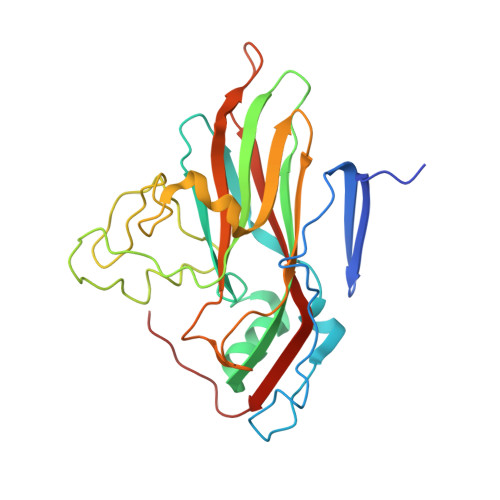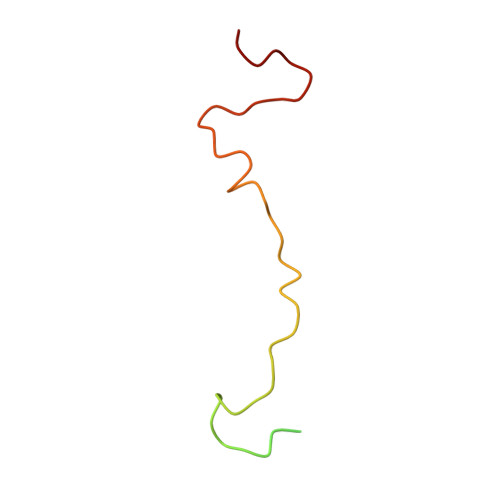Structural studies on human rhinovirus 14 drug-resistant compensation mutants.
Hadfield, A.T., Oliveira, M.A., Kim, K.H., Minor, I., Kremer, M.J., Heinz, B.A., Shepard, D., Pevear, D.C., Rueckert, R.R., Rossmann, M.G.(1995) J Mol Biology 253: 61-73
- PubMed: 7473717
- DOI: https://doi.org/10.1006/jmbi.1995.0536
- Primary Citation of Related Structures:
1RUC, 1RUD, 1RUE, 1RUF, 1RUG, 1RUH, 1RUI, 1RUJ - PubMed Abstract:
Structures have been determined of three human rhinovirus 14 (HRV14) compensation mutants that have resistance to the antiviral capsid binding compounds WIN 52035 and WIN 52084. In addition, the structure of HRV14 is reported, with a site-directed mutation at residue 1219 in VP1. A spontaneous mutation occurs at the same site in one of the compensation mutants. Some of the mutations are on the viral surface in the canyon and some lie within the hydrophobic binding pocket in VP1 below the ICAM footprint. Those mutant virus strains with mutations on the surface bind better to cells than does wild-type virus. The antiviral compounds bind to the mutant viruses in a manner similar to their binding to wild-type virus. The receptor and WIN compound binding sites overlap, causing competition between receptor attachment and antiviral compound binding. The compensation mutants probably function by shifting the equilibrium in favor of receptor binding. The mutations in the canyon increase the affinity of the virus for the receptor, while the mutations in the pocket probably decrease the affinity of the WIN compounds for the virus by reducing favorable hydrophobic contacts and constricting the pore through which the antiviral compounds are thought to enter the pocket. This is in contrast to the resistant exclusion mutants that block compounds from binding by increasing the bulk of residues within the hydrophobic pocket in VP1.
Organizational Affiliation:
Department of Biological Sciences, Purdue University, West Lafayette, IN 47907-1392, USA.




















